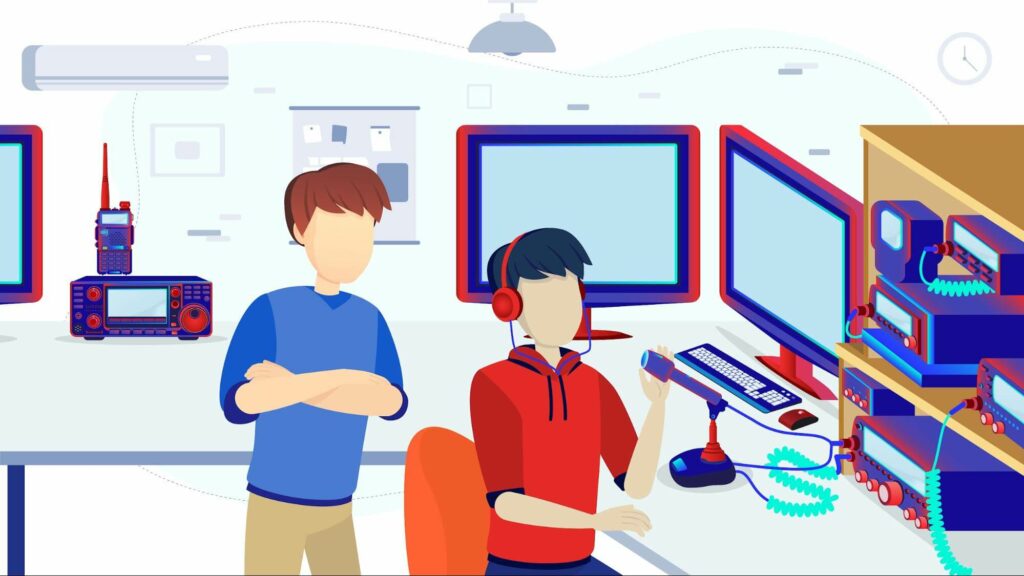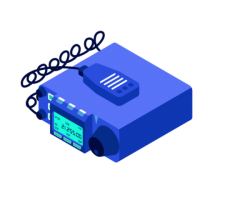If you’re new to ham radio, you might feel overwhelmed by the unique jargon used by amateur radio operators. But fear not! In this guide, we’ll demystify the language, helping you sound like an expert on the air. Whether you’re an aspiring engineer or a hobbyist, understanding these terms is crucial.
What is Ham Radio Jargon?
Ham radio has its own language, deeply rooted in its history, particularly in Telegraphy and Morse code from the 1850s. Getting licensed and learning this jargon is essential to navigate the world of amateur radio successfully.

Common Ham Radio Terms Explained
Elmer: The Ham Radio Mentor
An “Elmer” in ham radio is a mentor who guides you through various aspects of the hobby, be it Morse code or antenna setup. Every hobbyist can benefit from an Elmer.
Decoding Equipment Terms
In ham radio, terms like “radio,” “rig,” or “unit” refer to devices capable of sending or receiving radio signals. The terms “receiver” and “transmitter” distinguish between devices used for listening and sending signals, respectively. Understanding these terms is crucial for every amateur radio operator.
Understanding Transceivers
A “transceiver” combines a transmitter and receiver into one device. They can range in size and functionality, catering to different needs within the ham radio community. For a deeper dive into ham radio equipment, you can check out our article on Ham Radio Antennas.
Morse Code in Ham Radio
Morse code remains a crucial aspect of ham radio. There are different types of Morse code keys, like the “straight key” or “paddle,” each offering a unique way of sending Morse code.
To understand more about Morse code, read our article on Morse Code in Ham Radio.
Antennas and Cables
The antenna and cable are vital for effective ham radio communication. Terms like “coaxial cable,” “dipole,” “vertical,” and “yagi” are commonly used to describe various types of equipment. Understanding these can greatly enhance your ham radio experience.
Communicating in Ham Radio

Calling CQ: Seeking Communication
“CQ” signals a call for communication in ham radio. It’s an open invitation for others to respond and engage in a conversation. This term is fundamental in ham radio communications.
DX and Awards
“DX” refers to long-distance communication. Achieving the “DXCC Award” is a milestone for ham radio operators, signifying confirmed contacts with 100 countries. For more on awards and achievements in ham radio, check out ARRL. You can also read our article on Ham Radio Satellites.
Q Codes and Their Usage
Q codes like QRP (low power), QTH (location), and QSY (changing frequency) are shorthand methods for quick communication in ham radio. These codes are essential for efficient and effective communication on the air.
Sign-Off Codes: 73 and 88
The codes “73,” meaning “best regards,” and “88,” signifying “love and kisses,” are traditional sign-offs in ham radio communications. They hold a special place in the heart of the ham radio community. To understand their significance, you can read What Does 73 Mean in Ham Radio.
The Importance of S.O.S.
The S.O.S. signal, a universal distress signal in Morse code, underscores the vital role of ham radio in safety and emergencies. Its continued use and recognition highlight the importance of ham radio in global communication.
Conclusion
Mastering ham radio jargon opens up a world of communication and community. If you’re ready to start making your own ham radio QSOs, consider getting licensed through our comprehensive courses at Ham Radio Prep. With over 70,000 people licensed thanks to our courses, we’re ready to help you join the world of amateur radio.











